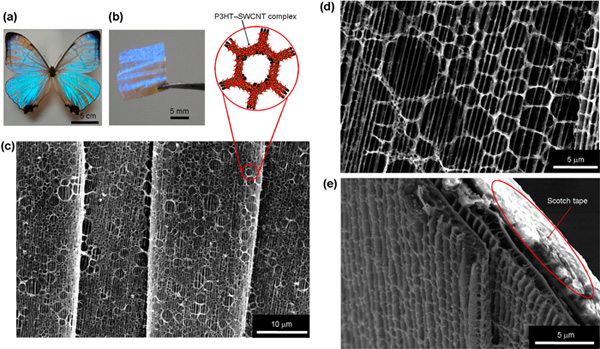Leveraging the amazing natural properties of the Morpho butterfly's wings, scientists have developed a nanobiocomposite material that shows promise for wearable electronic devices, highly sensitive light sensors and sustainable batteries. A report on the new hybrid material appears in the journal ACS Nano.
Eijiro Miyako and colleagues explain that Morpho butterfly wings have natural properties that are beyond the capabilities of any current technology to reproduce artificially. In addition to being lightweight, thin and flexible, the butterfly’s wings absorb solar energy, shed water quickly and are self-cleaning. Miyako’s group had been working with tiny cylinders of carbon termed carbon nanotubes (CNTs), and became fascinated with CNTs’ unique electrical, mechanical, thermal and optical properties. Miyako’s team set out to marry the wings and nanotubes to produce an all-new hybrid material.
They describe growing a honeycomb network of carbon nanotubes on Morpho butterfly wings, creating a composite material that could be activated with a laser. The resulting material heated up faster than the original components by themselves, exhibited high electrical conductivity and had the ability to copy DNA on its surface without absorbing it. “Our present study highlights the important progress that has been made toward the development of smart nanobiomaterials for various applications such as digital diagnosis, soft wearable electronic devices, photosensors, and photovoltaic cells,” the scientists state.

The authors acknowledge funding from the Japan Society for the Promotion of Science.
Source: ACS Nano
